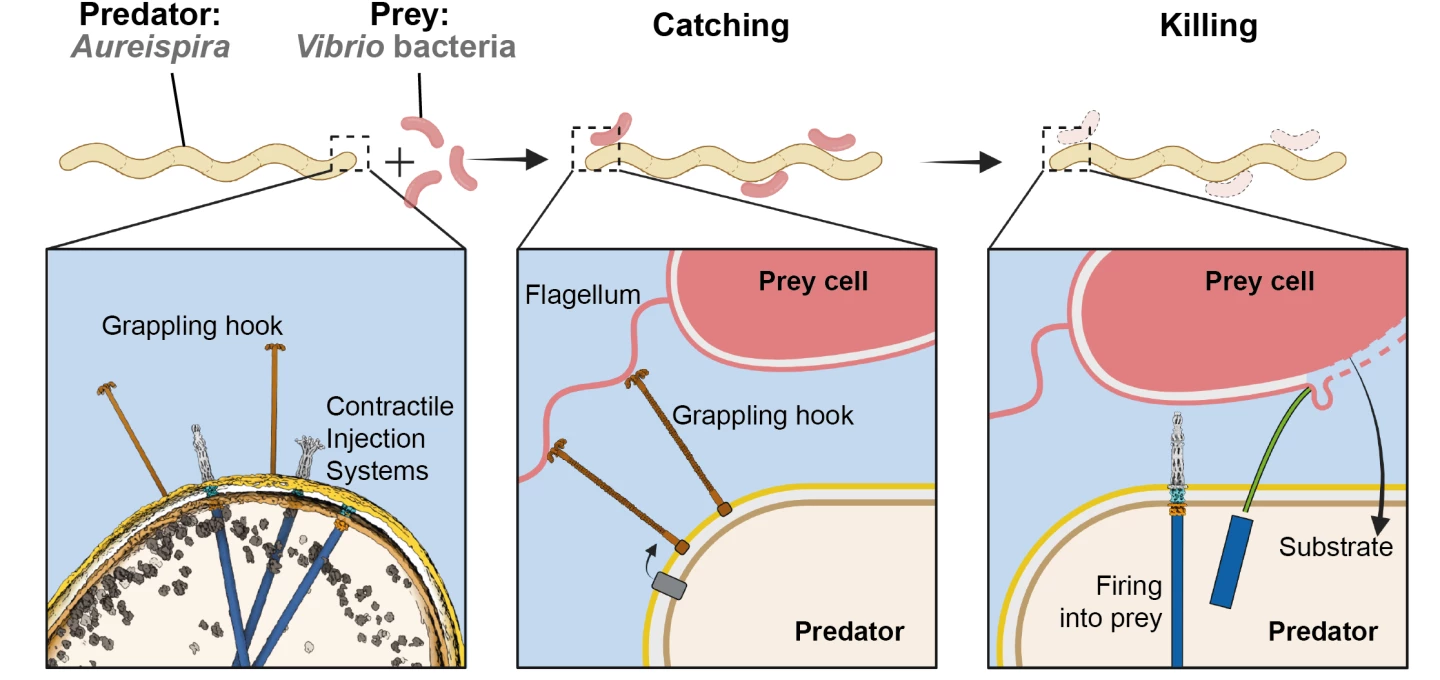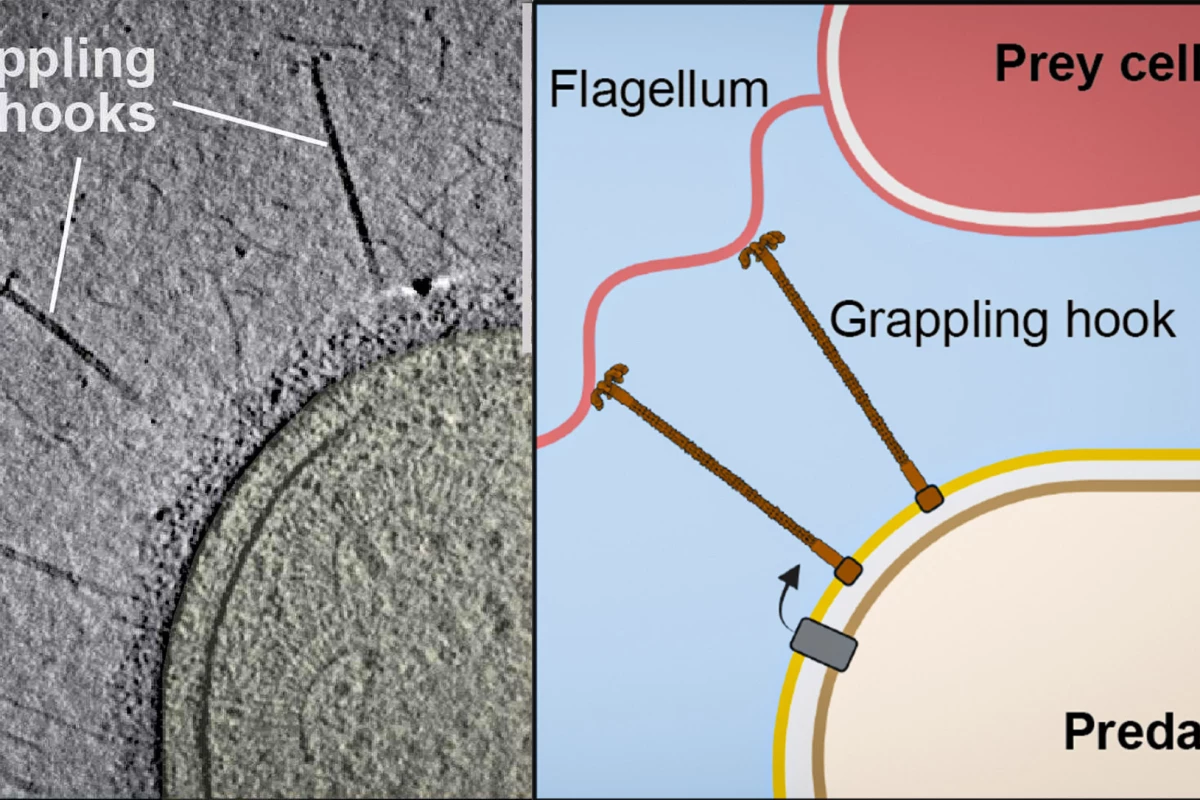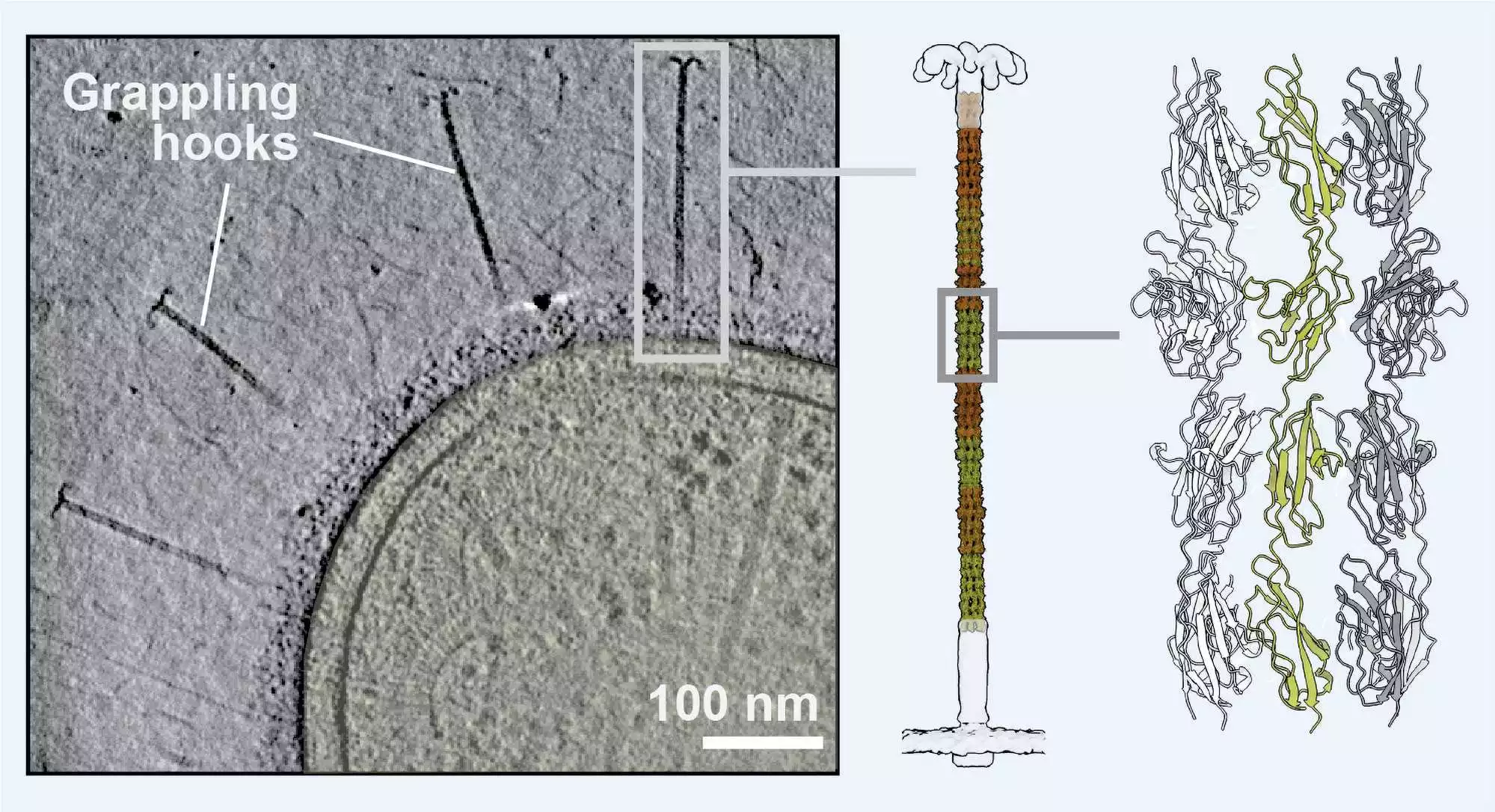Microscopic battles rage around, on and in us at all times, and the microbial combatants use far more exciting weapons than we might realize. Scientists have now observed a bacterium that attacks like a pirate ship, ensnaring its prey with grappling hooks and firing “cannons” that blow it open.
The species in question is known as Aureispira, a common marine bacterium that can thrive in water or on surfaces. If there are enough nutrients in its environment, Aureispira will live out a peaceful existence. But as soon as the food runs out, the bug turns to the pirate life and begins hunting down other unsuspecting bacteria, using techniques that would make Jack Sparrow proud.
First, it sidles up against its prey, then it fires tiny grappling hooks that tangle themselves around the target’s flagella – these whip-like appendages are used by many bacteria to move around, so hooking those prevents escape.
Next, Aureispira fires off its cellular cannons – structures called contractile injection systems, which work like bolt guns and fire high-speed projectiles. These blast through the outer membrane of the prey cell, spilling its innards, which Aureispira can then gobble up.
“The whole scene resembles a pirate raid on another ship,” said Martin Pilhofer, lead author of the study.

Aureispira had already been known to pull off this kind of attack, but for the new study the researchers looked closer, using light microscopy and cryo-electron microscopy. These technologies helped to examine the function and structure of the weapons. The team also observed that the bacterium does engage in this behavior in the wild, but only does so when natural nutrients become scarce.
As for what we might do with this information, the team says at this stage it’s mostly just basic research driven by their own curiosity. But a better understanding of these cellular weapons could eventually be harnessed to wipe out infections or algae blooms, or deliver medicines to cells in the body.
For now, we’ll just have to use the study to fuel our imaginations about the microscale marine battles taking place everywhere.
The research was published in the journal Science. Some of the battle can be seen in the video below.
Source: ETH Zurich






